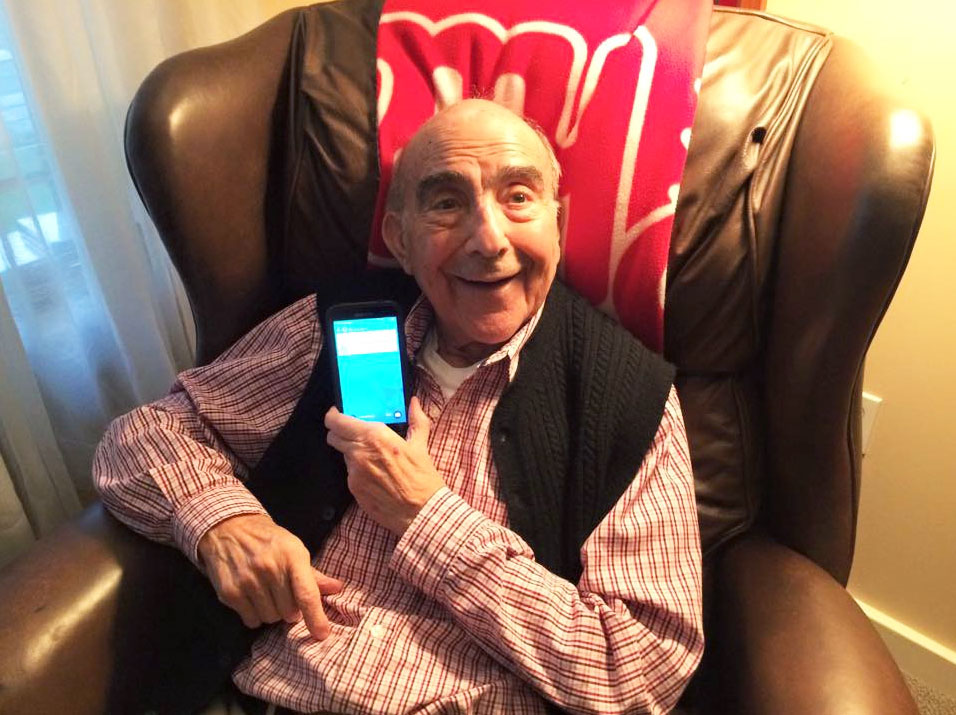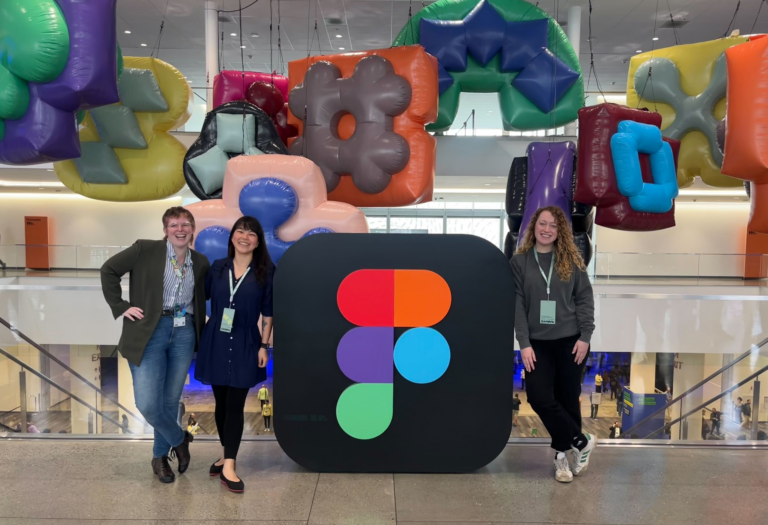The Myth of Intuitive Design

We had high hopes for my Grandpa Ben’s new phone. My mother and I decided the Samsung Galaxy was right for him because of its screen size and Android’s level of customization. He was so excited! Finally, he was going to be able to listen to his voicemail. Make calls. Text. Even check the weather! Except, there was one, small issue: he couldn’t do any of those things.

We tried our hardest, finding the most basic launcher possible, simplifying his home screen, using 32pt system fonts, etc. But as hard as we tried, it never worked. He could barely wake up the device let alone do anything productive on it. That’s when I had a revelation: intuition is a myth in UX design.
Intuition Defined
Perhaps no word is more commonly used in connection with a digital interface than “intuitive.” I hear a lot of things like, “this design is all wrong. It’s just not intuitive,” or “this new version of our app is great. It’s so intuitive!” Like a host of other words, it’s become one of those ubiquitous, meaningless buzzwords that we rarely define. What does it actually mean?
At a basic level, intuition is defined by the Googles as “the ability to understand something immediately, without the need for conscious reasoning.” If something is intuitive it is inherently usable—no explanation required. The assumption is that if I design something well, anyone in the world should be able to use it with ease.
When it comes to a digital design, the term intuitive design is often used to describe a digital tool or service that is easy to use without prior training, explanation, or education. A person should be able to navigate to a website or app—or use another intuitive interface, like a touch screen at a kiosk—and quickly be able to figure out how to get the information they need or to achieve a specific goal.
Understanding Intuitive Design
So why couldn’t grandpa Ben use his smartphone? Why, after giving him multiple smartphones (yes, iOS and Android—don’t go there) did he have such consistent difficulty using them? And what clues does his isolated experience suggest about the nature of intuition as it relates to user experience?
As a good little UX researcher, I spent some time discovering the cause. I gave him basic tasks to complete and watched what happened.
“Alright grandpa, can you make a phone call?” I asked. He looked around on his screen, eventually found the icon that looked like a phone, and tried to push it. But each time he tried, he wouldn’t tap the screen properly to open the phone app. Sometimes he would tap too lightly, sometimes too long, and sometimes he would tap two apps at once. Consistently, he wouldn’t tap the screen correctly to open an app.
This may sound strange, but think about the difference between a tap and a long press. On Android, a long press is activated after half a second. And think about the countless number of times you’ve noticed an app doesn’t respond instantly, so you don’t know whether you tapped it properly, which leads you to tap it again. The fact is that even the basic action of tapping a screen and interpreting the visual response afterwards is more complex than we sometimes realize.
You see, my grandpa didn’t have countless hours of practice and exposure to digital interfaces, so he hadn’t developed the proper tactile skills and visual recognition to easily maneuver his phone. In his world, buttons don’t have multiple outputs based on extremely sensitive touch inputs. So it wasn’t that the phone lacked the magical quality of “intuition,” it’s that using it requires a type of skill and knowledge completely unfamiliar to this old Sicilian user.
At Think Company, we do quite a bit of enterprise software design. Time and time again, I’m astounded by the ease with which users learn to navigate horrid, cumbersome, complex interfaces out of necessity. They become experts at systems that literally go against every heuristic design principle in the book. Why? Because after using them for eight hours a day, every day, those interfaces eventually become “intuitive” for these people.
Refining Intuitive Design
If intuition is defined as “the ability to understand something immediately, without the need for conscious reasoning,” that begs the question… for whom is the thing in question immediately understandable? And how did they gain the ability to understand this thing without the need for conscious reasoning?
The problem is that intuition is often thought of as an inherent quality of design without any consideration of the habits, contexts, experience, and prior knowledge of users. Proponents of skeuomorphism argue that designs can be more intuitive as they mimic our experience with the natural world. Perhaps. But this still begs the question, “whose experience are we talking about here?”
Part of the problem is a tendency to confuse natural intuition and learned intuition. If the phrase “learned intuition” sounds self-contradictory, you might be confusing these two things. When I say “natural” intuition, I mean something that is truly baked into our being—i.e. basic human instincts like eating or sleeping. No one needs to teach us how to eat or sleep. These propensities are inborn.
But most things in life aren’t like that—UI design included. Humans aren’t born with some kind of innate propensity to navigate digital interfaces, so we have to learn to use them. If a design feels intuitive, that means we have learned the design language in question so deeply that we understand it without conscious thought.
What Does Intuitive User Experience Mean?
Today, we think of certain design systems as naturally intuitive though there is little (if anything) that is naturally intuitive about them. iOS and OSX are commonly thought of as naturally intuitive systems. I once heard a friend telling his wife how her Android smartphone wasn’t intuitive, to which she casually responded, “well, it’s intuitive to me.” Exactly. It’s intuitive to her.
Her experience on Android meant it was intuitive to her, exactly like my friend’s experience learning iOS made it intuitive to him. What Apple has done is try to create consistency across its platforms so that after you learn a pattern, it is reused in other places and doesn’t need to be re-learned. But again, there’s nothing inherently intuitive about those patterns. You have to learn them first.
We might then define intuition as the ability to understand something immediately, without the need for conscious reasoning because it aligns with a user’s habits and experience. Then, instead of asking, “is this design intuitive?” we ask, “is this design intuitive for the people who are using it?”
Designing Intuitive Experiences
As UX practitioners who know that UX is everywhere, we’d love to believe that we can design interfaces that are inherently intuitive. We’re tempted to take credit for the fact that our designs are easy to use for people who spend 4+ hours a day navigating complex digital interfaces. But the reality is, people find interfaces intuitive when they fit within the countless design patterns they have learned from years of exposure and practice.
We can use design heuristics to give us a good shot at creating decent designs. But the process of creating a design that is easy or even delightful is the painstaking, patient work of understanding the people you are designing for. When we build interfaces that fit within their unique set of contexts, experiences, habits, jargon, and understanding, then, and only then, will we create designs that are truly intuitive.



